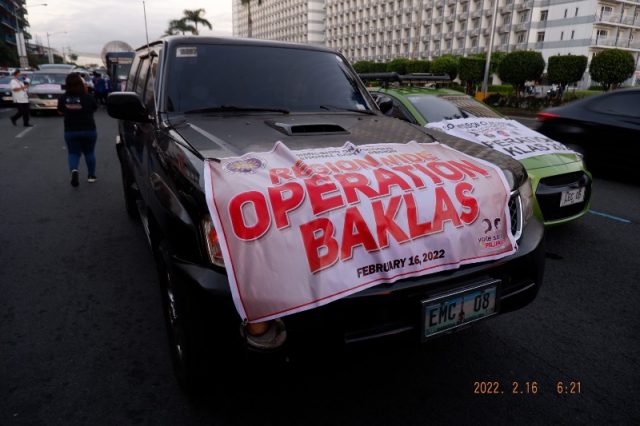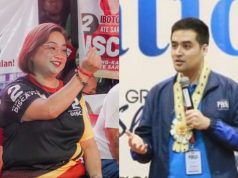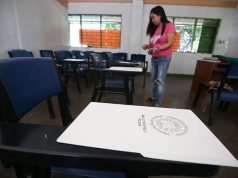
A 2015 Supreme Court ruling was brought up on Twitter in response to the Commission on Elections‘ directive to remove tarpaulins on private properties.
Supporters of a presidential bet previously reported that some Comelec personnel dismantled their campaign tarpaulins even inside their owned properties.
The removal of campaign paraphernalia was part of the poll body’s operations called “Oplan Baklas” that started on February 8 or the first day of campaign season for national candidates.
READ: Comelec urged to look into dismantling of tarps in private properties
In a press conference on February 16, Comelec spokesperson James Jimenez recommended that those who have a problem with their operations should file a complaint before the commission.
“I will recommend to anyone who has a problem with what we are doing to file a complaint about what we are doing. In the meantime, we are taking steps to make sure that our laws are complied with,” Jimenez said.
In response to this, retired poll commissioner Rowena Guanzon and other concerned Filipinos reminded Comelec about the SC’s decision on the case between the Diocese of Bacolod and the poll body in 2015.
“Diocese of Bacolod vs COMELEC (2015). @COMELEC cannot remove posters on private property .It is time for @COMELEC to review that Resolution,” Guanzon said.
Diocese of Bacolod vs COMELEC ( 2015) . @COMELEC cannot remove posters on private property .It is time for @COMELEC to review that Resolution.
— Rowena Guanzon (@rowena_guanzon) February 16, 2022
The hashtag #AnyareComelec also trended on Twitter Philippines as social media users called out the poll body for their interpretation of their rules.
As of writing, the hashtag garnered more than 14,100 tweets under its belt.
“Prangkahan tayo, COMELEC. What’s the real deal? Why all these blatant disregard, twisting and misinterpretation of a well-settled jurisprudence? #AnyareCOMELEC,” a Twitter user asked.
Diocese of Bacolod vs Comelec
According to G.R. No. 205728, in 2013, two tarpaulins were posted in a private compound housing the San Sebastian Cathedral of Bacolod.
Each tarpaulin was approximately 6 x 10 feet in size.
The tarpaulins also have names of electoral candidates for that year.
Comelec later issued a letter ordering the removal of these tarpaulins from the area because they violate the size requirements of 2 x 3 feet for printed propaganda materials.
The poll body also alleged that the tarpaulins were “promoting for or against the candidates and party-list groups” mentioned on them.
In January 2015, the SC voted 9-5 in favor of the diocese in upholding the legal display of their tarpaulins at the San Sebastian Cathedral.
It was stated that Comelec has “no legal basis to regulate expressions made by private citizens.”
“Petitioners are not candidates. Neither do they belong to any political party. COMELEC does not have the authority to regulate the enjoyment of the preferred right to freedom of expression exercised by a non-candidate in this case,” the decision reads.
The size of the tarpaulins is also considered “protected” under the Constitution.
“Large tarpaulins, therefore, are not analogous to time and place. They are fundamentally part of expression protected under Article III, Section 4 of the Constitution,” the decision reads.
Statements vs Oplan Baklas
In a public advisory, the University of the Philippines Law Groups led by the Constitutional Law Cluster also cited this resolution as among the limits of Comelec’s authority.
In their advisory, the following are the cases or examples where Comelec’s power have been limited:
- Regulating ownership per se of public utility vehicles and transport terminals.
- Political expression in public transport terminals owned by private persons.
- Stickers, decals and other forms of expression on a person’s car (even the car bumper)
- Political expression including signs and tarpaulins by private citizens inside their own properties (Diocese of Bacolod v. Comelec)
Veteran lawyer Chel Diokno, senatorial candidate, advised the public to file legal cases against any authority who attempts to enter private property premises to take down campaign materials without search warrants.









